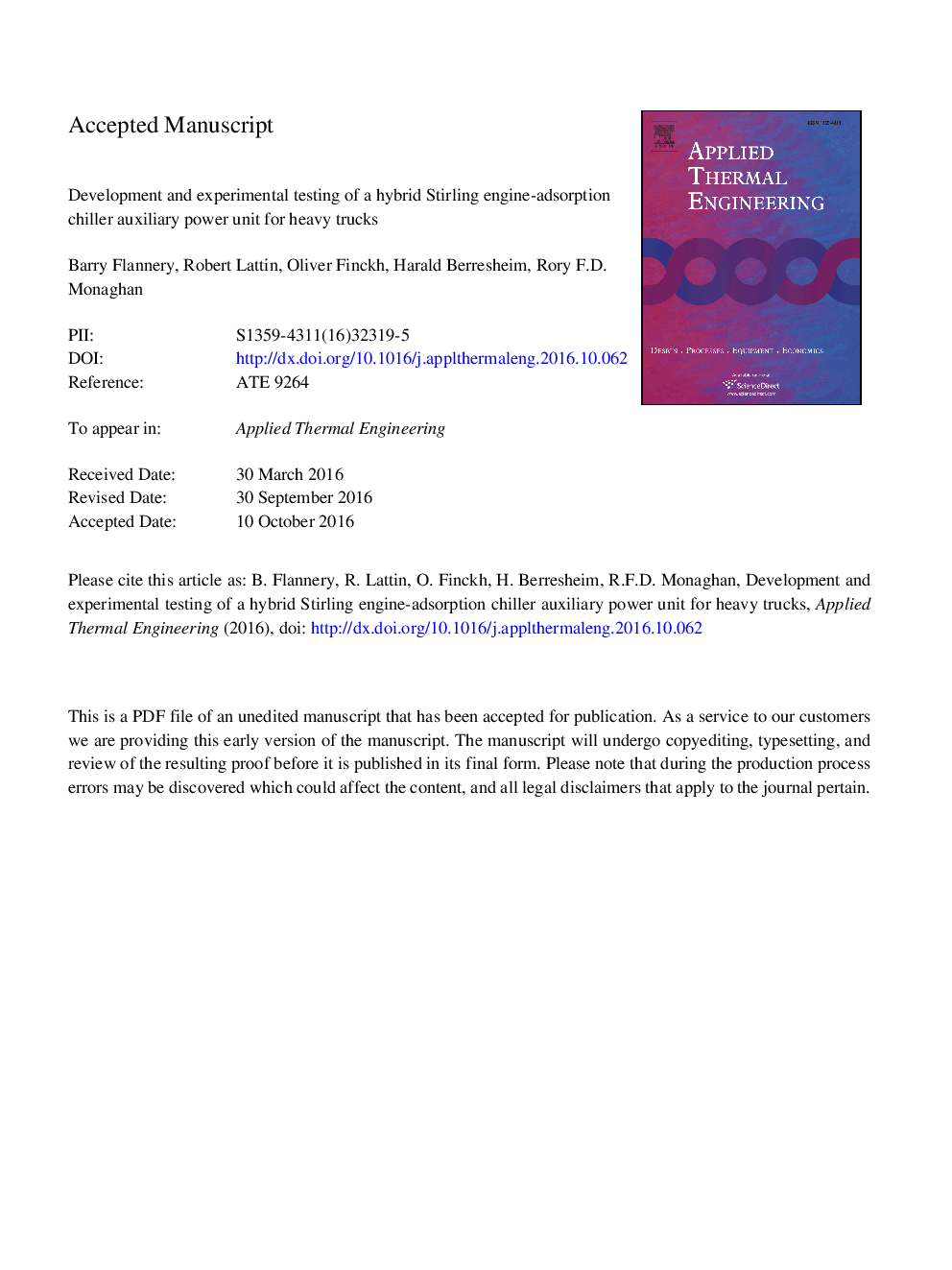| Article ID | Journal | Published Year | Pages | File Type |
|---|---|---|---|---|
| 4991721 | Applied Thermal Engineering | 2017 | 13 Pages |
Abstract
Experimental results from a Stirling-adsorption system (SAS) prototype test rig are also presented which highlight system integration dynamics and overall performance. The adsorption chiller achieved an average COP of 0.42 ± 0.06 and 2.3 ± 0.1 kWt of cooling capacity at the baseline test condition. The prototype SAS test rig demonstrates that there appear to be no major technology barriers remaining that would prevent adoption of the SAS concept in a next-generation APU. Such a system could offer a reduction of exhaust emissions, greenhouse gases (GHG), ozone-depleting substances, noise, low maintenance and the potential for fuel flexibility and higher reliability. Preliminary modelling results indicate that the proposed system could offer superior overall electrical and cooling efficiencies compared to incumbent APUs and demonstrate a payback period of 4.6 years.
Related Topics
Physical Sciences and Engineering
Chemical Engineering
Fluid Flow and Transfer Processes
Authors
Barry Flannery, Robert Lattin, Oliver Finckh, Harald Berresheim, Rory F.D. Monaghan,
